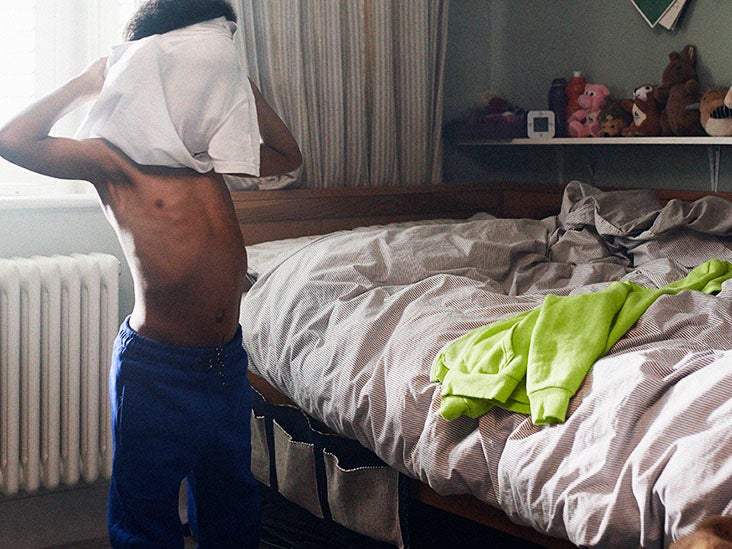Hives in young children: What to know - Medical News Today

Hives are raised rashed that appear on the skin. They can be a symptom of the skin condition urticaria. They are often red or skin-colored, itchy, and swollen. Hives are very common in young children.
Urticaria is the
Hives vary in shape and size and may develop anywhere on the body. They can appear as spots or patches and are often itchy and uncomfortable.
Hives usually fade within
This article explores the condition urticaria, the prevalence of hives in kids, and different methods of treating symptoms.
The condition urticaria, in which hives develop, can be acute or chronic. With the acute condition, hives are temporary, whereas chronic urticaria lasts for much longer.
The three main causes of hives are:
- an allergic reaction
- a physical trigger
- a medical condition
In young children, hives associated with acute urticaria can result from any of the
- infection
- pressure on an area of skin
- food
- medication
- exposure to allergens such as latex or plants
In rare cases, exposure to water or sunlight can cause hives.
Causes of infection, including both viral and bacterial infections, are responsible for over 40% of acute urticaria cases. Infection is the most common cause of hives in young children with acute urticaria.
Hives from chronic urticaria generally occur when a child has atopy. This is a genetic trait that increases the sensitivity of the immune system, making those with the trait more likely to develop allergies.
As mentioned in the section above, there are two types of urticaria. These are acute and chronic urticaria.
The type depends on the duration of symptoms. Acute urticaria usually goes away within
There are two categories within chronic urticaria. These are:
- Chronic spontaneous urticaria: This does not have a known trigger.
- Chronic inducible urticaria: This is where specific triggers set off symptoms, such as cold air.
Chronic urticaria causes hives that may persist for more than 6 weeks. For around 50% of people, the condition goes away on its own within a year.
Although chronic urticaria can last for over 6 weeks, individual hives typically do not last for longer than 24 hours.
In most cases, the best option is to treat hives at home.
Therapies can include over-the-counter medication, such as antihistamines or anti-inflammatory medication, and home remedies.
Home remedies that can relieve the itchiness of hives include:
- wearing cotton-based, loose clothing
- avoiding temperatures that are particularly hot or cold
- using a fragrance-free moisturizer on the itchy area
- using a cool compress
- taking a comfortably cool bath
If symptoms persist or the condition occurs regularly, a doctor may prescribe:
- stronger forms of antihistamines
- steroid medication
- menthol cream
If the urticaria symptoms are severe, a doctor may prescribe an epinephrine auto-injector pen in case of anaphylaxis. This is a form of injection that provides rapid adrenaline for use in life threatening allergic reactions.
Following prevention measures can reduce the chances of hives worsening.
Triggers are factors that cause histamine levels in the skin to increase, as well as other similar chemicals. It is easier to help prevent hives when the trigger is clear, as a person can know what to avoid.
Common triggers of hives include:
If the trigger is unclear, it is best to try and eliminate the possible factors to see if the hives stop occurring. Keeping track of when hives flare up can help when working out triggers.
Removing causes of stress may help to reduce symptoms, as stress can trigger hives to develop.
Individual hives usually disappear within 24 hours, but the condition urticaria may last for over six weeks. If the condition continues to persist, contact a doctor.
Before contacting a doctor about hives, take photographs of the skin. This is because the hives may fade by the appointment date.
If the hives go away but continue to return, the child may have an allergy. A doctor can use testing to assess what the triggering allergen may be.
Angioedema is a condition that can present
If the throat, mouth, lips, or tongue swell up or the child struggles to speak or breathe, seek immediate medical attention. This may be a sign of a severe allergic reaction.
Hives are common in young children, but they can affect people at any age. They are a symptom of the condition urticaria.
Urticaria may be acute or chronic, depending on how long it lasts. In children, the cause is often allergic reactions, with the immune system responding to triggers by sending chemicals such as histamines into the skin.
Other common causes of hives include infection and pressure.
Hives are not usually a cause for concern, as they will typically go away on their own. However, the rash can be itchy and uncomfortable. If hives persist or symptoms are uncomfortable, a person should contact a doctor.
Seek medical attention immediately if a child shows signs of anaphylaxis, such as difficulty talking or breathing.
Comments
Post a Comment